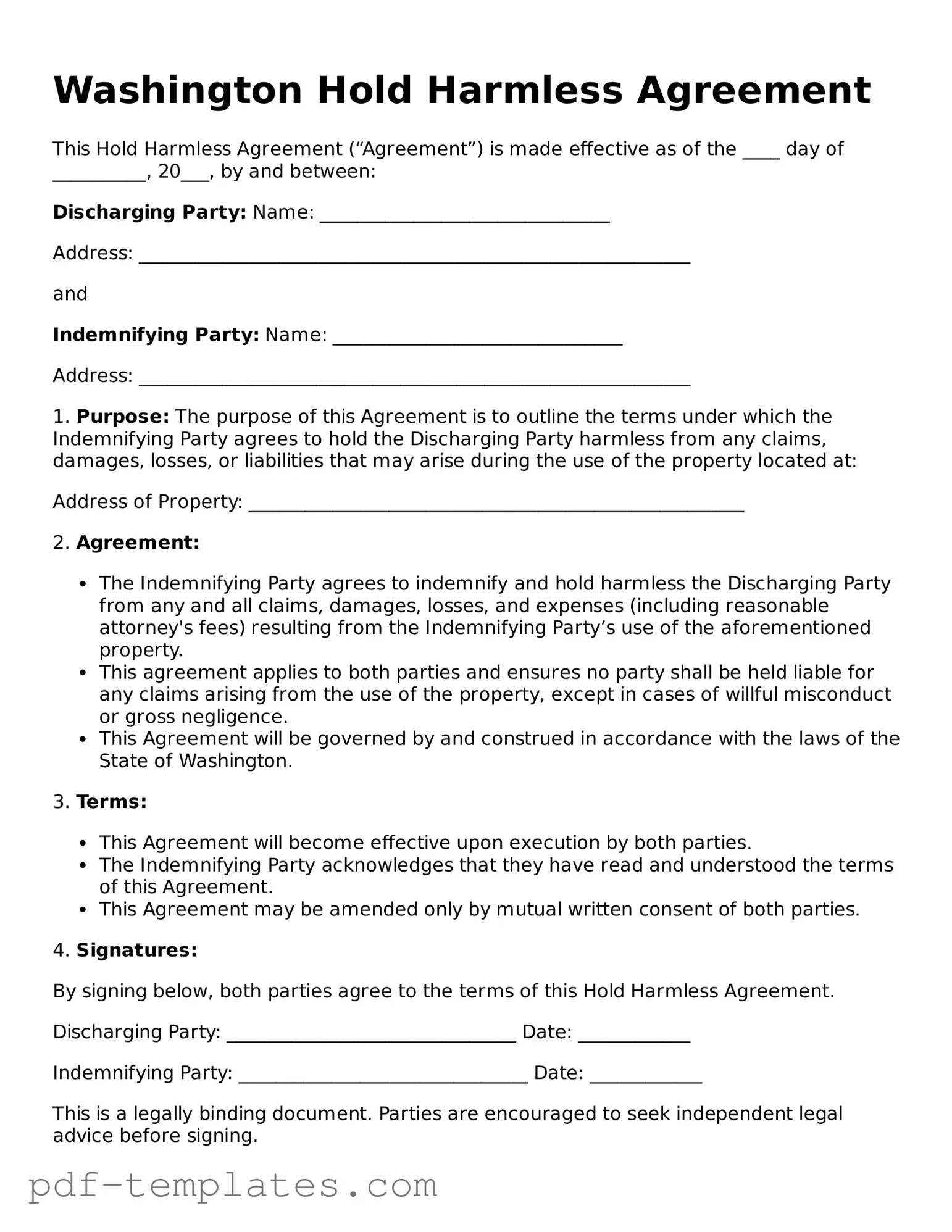The Indemnity Agreement is similar to the Washington Hold Harmless Agreement in that both documents aim to protect one party from liability. In an Indemnity Agreement, one party agrees to compensate another for any losses or damages incurred. This document often outlines the specific circumstances under which indemnification will occur, similar to how the Hold Harmless Agreement specifies the conditions under which one party will not hold another liable.
The Liability Waiver is another document that shares similarities with the Hold Harmless Agreement. A Liability Waiver is used to release one party from liability for certain risks associated with an activity. Participants often sign this waiver before engaging in activities like sports or events, acknowledging that they understand the risks involved. Both documents seek to limit legal responsibility, but a waiver typically focuses on voluntary participation in activities.
The Release of Liability form also resembles the Hold Harmless Agreement. This document allows one party to relinquish their right to pursue legal action against another party for specific incidents. Like the Hold Harmless Agreement, it serves to protect one party from being sued, but it often requires the signature of the individual agreeing to the release, making it more personal in nature.
A Confidentiality Agreement, or Non-Disclosure Agreement (NDA), is somewhat different but still shares protective elements with the Hold Harmless Agreement. While the Hold Harmless Agreement focuses on liability, a Confidentiality Agreement protects sensitive information from being disclosed. Both documents establish boundaries and responsibilities, aiming to shield one party from potential harm, whether financial or reputational.
The Service Agreement can also be compared to the Hold Harmless Agreement. This document outlines the terms of service between two parties, often including clauses that limit liability for one party. Both agreements emphasize the importance of understanding the responsibilities and risks involved in a relationship, though the Service Agreement typically covers broader operational terms.
The Rental Agreement is another document that may bear similarities. In a Rental Agreement, landlords often include clauses that hold tenants responsible for damages. While the Hold Harmless Agreement focuses on liability in a broader context, both documents establish expectations for responsibility and accountability in their respective situations.
The Partnership Agreement is akin to the Hold Harmless Agreement in that it defines the roles and responsibilities of each party involved. This document often includes provisions that protect partners from liabilities incurred by other partners. Both agreements aim to clarify expectations and mitigate risks, fostering a smoother working relationship.
The Employment Contract shares some common ground with the Hold Harmless Agreement as well. An Employment Contract outlines the rights and responsibilities of both the employer and employee. It may include clauses that limit liability for workplace incidents. Both documents serve to establish clear terms and protect parties from unforeseen circumstances.
The Construction Contract is another relevant document. In construction projects, these contracts often include Hold Harmless clauses to protect contractors from liability related to accidents or damages on the job site. Similar to the Hold Harmless Agreement, it aims to delineate responsibilities and protect parties from potential legal claims.
Finally, the Insurance Policy can be viewed as a protective document similar to the Hold Harmless Agreement. Insurance policies provide coverage against various risks and liabilities. While the Hold Harmless Agreement prevents one party from being held liable, an insurance policy offers financial protection against those liabilities. Both documents emphasize risk management and the importance of understanding potential exposures.
